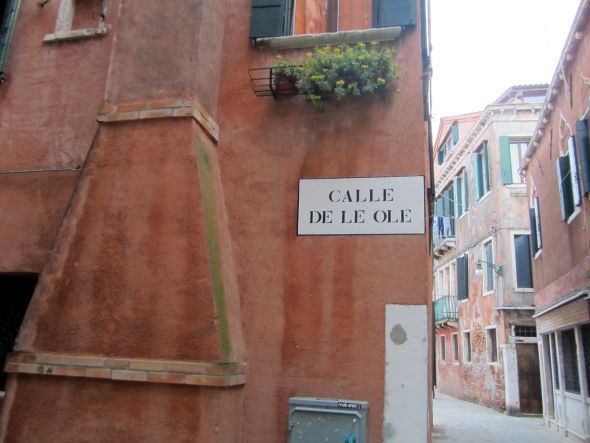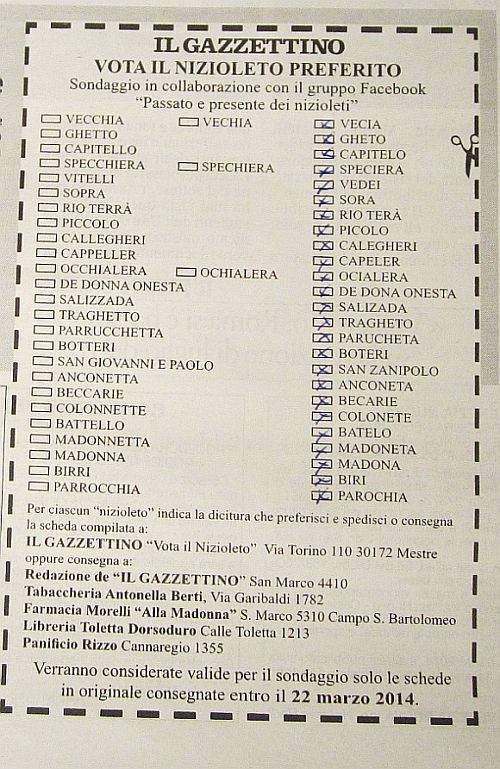
The bedsheets, as you recall, are known as nizioleti here, and are the characteristic street signs with their often-exotic names in the Venetian language.
But hidden within them was a problem which nobody had ever noticed — nobody except Tiziana Agostini, the Assessore (person officially responsible) for Place Names.
The nizioleti are in Venetian, but she thought they should be in Italian. Time to move on, leave that quaint little old past behind, step up the game. Was she ever surprised last December when she discovered that the Venetians were massively opposed to this cultural non-improvement. A citizens’ group quickly formed to stop the madness and promote the repairing and repainting of the good old names that were already in place and doing just fine as they were, thanks so much.
Citizens’ groups here can’t count on accomplishing much beyond letting their dudgeon be known, but in this case the response came from everywhere, it seemed, and it was unanimous: We want the old names back. Don’t fix the names. Leave the names the hell alone.
And the outcry seems to have worked.
Ms. Agostini came out from under her desk when the bombardment stopped, and has been meeting with the core citizens’ group with the intention of reviewing and correcting the situation. Fancy way of saying “Put the words back where they belong.”
Meanwhile, the Gazzettino has undertaken a poll of its readers. Every day for about a week (the last day will be March 16), the same list of names is published in the paper, and the reader can indicate his/her preference by ticking the appropriate box. Then one merely has to cut out the little survey form, and take it to one of the drop-off stations. Happily, one of them is right here in via Garibaldi, though I would have gone all the way to the train station if that were my only option.
Naturally I’ve been ticking all the boxes on the right every day, and will keep on doing so till the end.
Then we’ll see if it ever made any difference.



